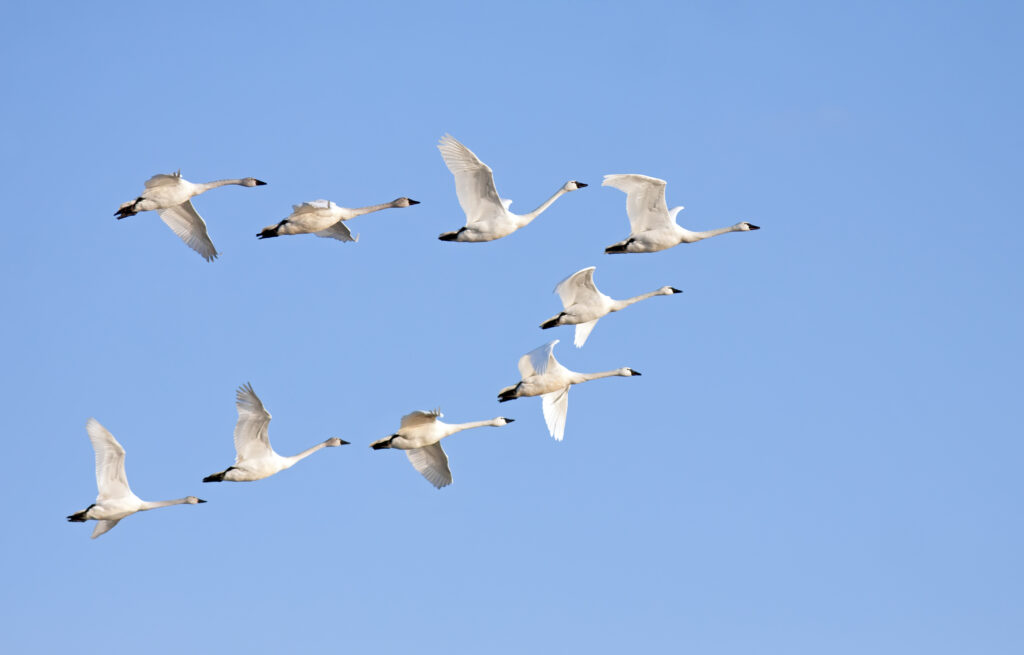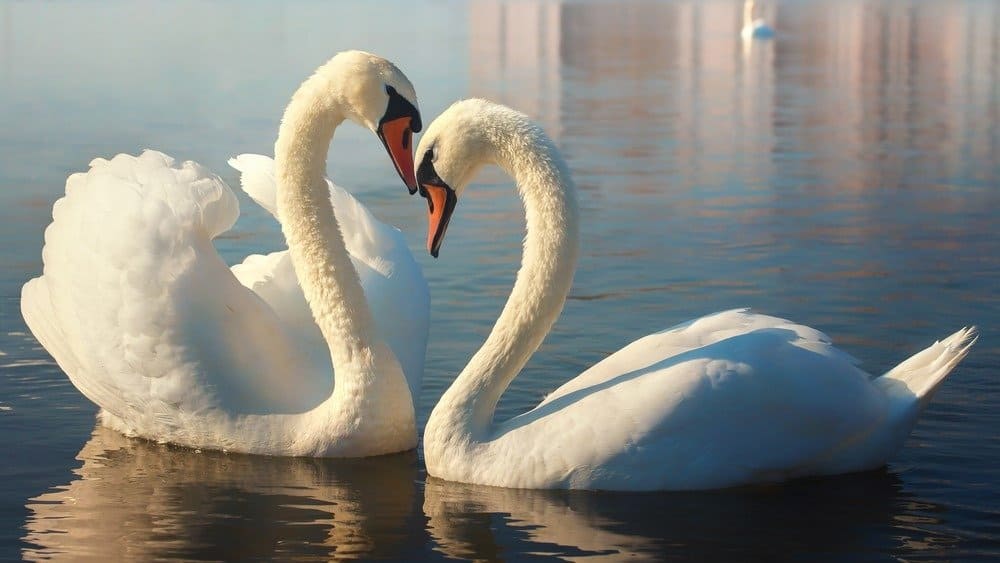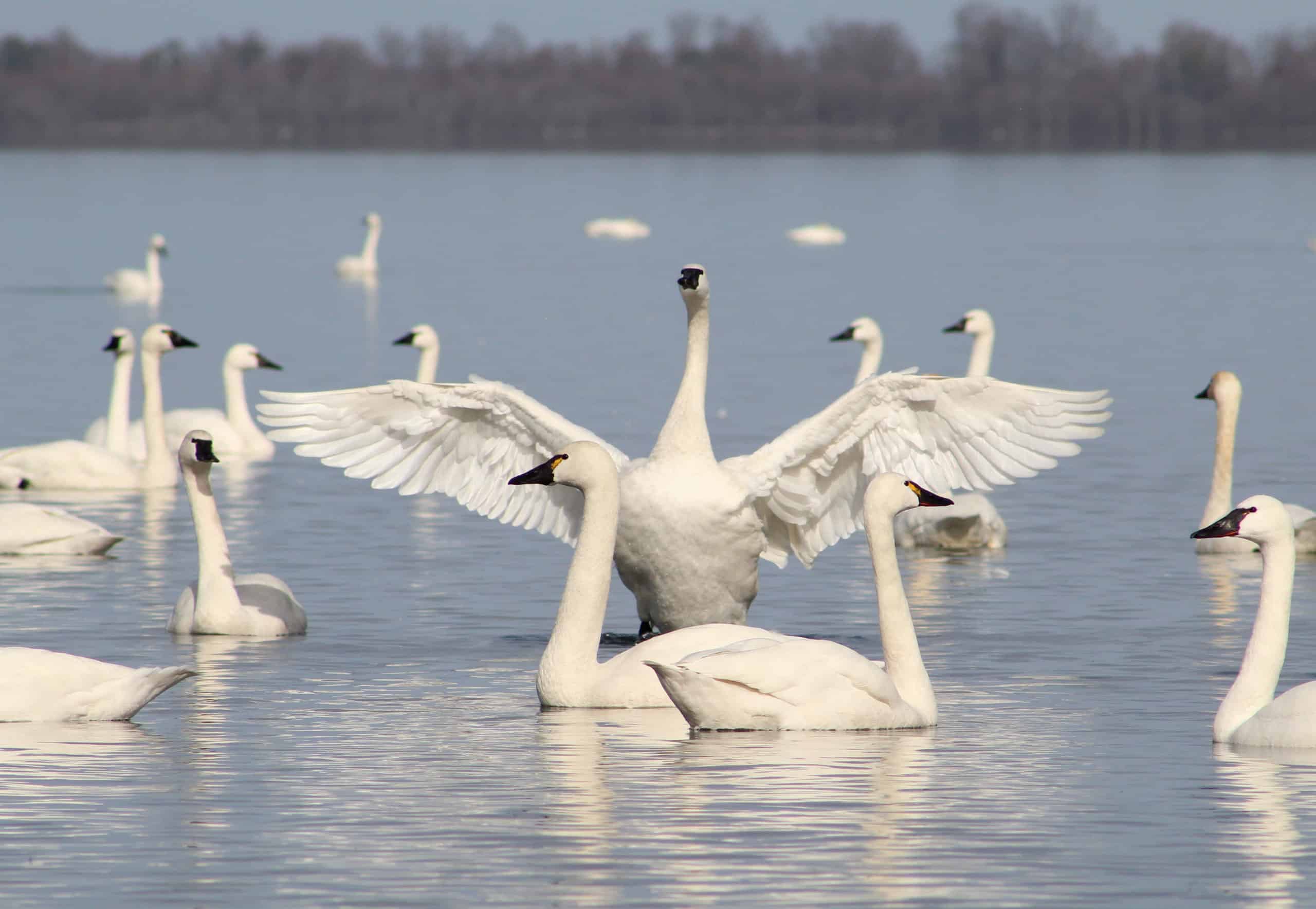They fly in a distinctive way and when they show affection toward one another, their necks form a heart. Swans are revered for their elegance and beauty. They’re gregarious creatures that gather in groups. But what is a group of swans called? Let’s find out!
Wedge of Swans: Swans in Flight
When a group of swans is in flight, they’re called a wedge. This isn’t the only term for them, however. Sometimes it could be a bevy, a flock, or even a herd. However, a wedge of swans is the most common term when they’re in flight. Also, when they’re in flight, the second most common term used is a flight of swans (seems apt!). They may be referred to as a bank when they’re on the ground. When together, they’re a rowdy bunch, making all sorts of honking noises. They’re protective of one another and may hiss at you if you get too close for their comfort.

Tundra swans flying in formation.
©Delmas Lehman/Shutterstock.com
Do Male Swans Join the Wedge of Swans?
Many types of swans are migratory, meaning they travel long distances in search of the most comfortable climate and food source availability. Swans like trumpeter swans pair up and generally mate for life. When they relocate, they do so together. There is a possibility that they switch partners throughout their lives, but it doesn’t happen often. When a male and female come together, the younger female usually moves over to join him in his territory. However, if she is older than the male, the male adopts her territory as his own. They stay together throughout the year and often hang out with other swans to create larger groups.

Swans typically mate for life.
©Ira Kalinicheva/Shutterstock.com
How Many Swans Fly in an Average Wedge?
The number of swans that fly in a wedge varies depending on the type of swan. For example, the mute swan usually has between 10 and 50 swans in a wedge or bank. Other swans prefer higher numbers and may travel together in groups of thousands. Even if they reach these high numbers, they typically break off into smaller groups after feeding. These birds are social creatures and their strength in numbers aids their survival. When they fly in a wedge, they form a “V.” They do this purposefully, as the formation reduces the resistance of the air. The strongest adult birds take turns leading the wedge.
Types of Different Swans
There are many different types of swans, each with unique appearances and sets of behaviors. Some swan species include:
- Bewick’s swan (scientific name: Cygnus columbianus bewickii)
- Black swan (scientific name: Cygnus atratus)
- Black-necked swan (scientific name: Cygnus melanchoryphus)
- Mute swan (scientific name: Cygnus olor)
- Trumpeter swan (scientific name: Cygnus buccinator)
- Tundra swan (scientific name: Cygnus columbianus)
- And more!
Thank you for reading! Have some feedback for us? Contact the AZ Animals editorial team.








